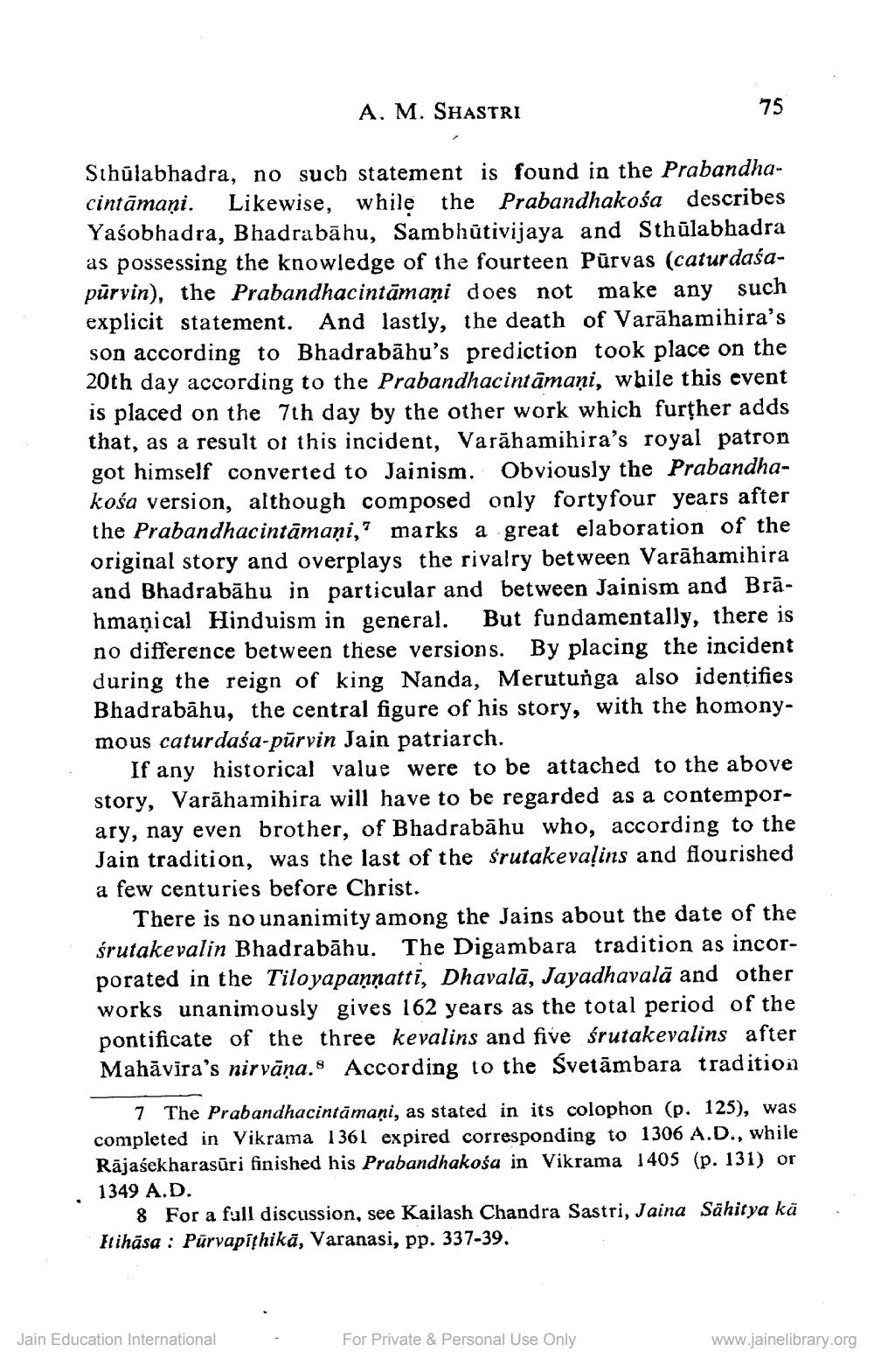________________
A. M. SHASTRI
75
Sthūlabhadra, no such statement is found in the Prabandhacintāmaņi. Likewise, while the Prabandhakośa describes Yaśobhadra, Bhadrabāhu, Sambhūtivijaya and Sthūlabhadra as possessing the knowledge of the fourteen Pūrvas (caturdaśapūrvin), the Prabandhacintämaņi does not make any such explicit statement. And lastly, the death of Varāhamihira's son according to Bhadrabāhu's prediction took place on the 20th day according to the Prabandhacintāmaņi, while this event is placed on the 7th day by the other work which further adds that, as a result of this incident, Varāhamihira's royal patron got himself converted to Jainism. Obviously the Prabandhakośa version, although composed only fortyfour years after the Prabandhacintāmaņi,' marks a great elaboration of the original story and overplays the rivalry between Varāhamihira and Bhadrabāhu in particular and between Jainism and Brāhmaṇical Hinduism in general. But fundamentally, there is no difference between these versions. By placing the incident during the reign of king Nanda, Merutunga also identifies Bhadrabāhu, the central figure of his story, with the homonymous caturdaśa-pūrvin Jain patriarch.
If any historical value were to be attached to the above story, Varāhamihira will have to be regarded as a contemporary, nay even brother, of Bhadrabāhu who, according to the Jain tradition, was the last of the frutakevaļins and flourished a few centuries before Christ.
There is no unanimity among the Jains about the date of the śrutakevalin Bhadrabāhu. The Digambara tradition as incorporated in the Tiloyapannatti, Dhavalā, Jayadhavalā and other works unanimously gives 162 years as the total period of the pontificate of the three kevalins and five śrutakevalins after Mahāvira's nirvāṇa.8 According to the Svetāmbara tradition
7 The Prabandhacintamani, as stated in its colophon (p. 125), was completed in Vikrama 1361 expired corresponding to 1306 A.D., while Rājasekharasūri finished his Prabandhakośa in Vikrama 1405 (p. 131) or 1349 A.D.
8 For a full discussion, see Kailash Chandra Sastri, Jaina Sahitya kā Hihāsa : Pürvapithikā, Varanasi, pp. 337-39.
Jain Education International
For Private & Personal Use Only
www.jainelibrary.org




